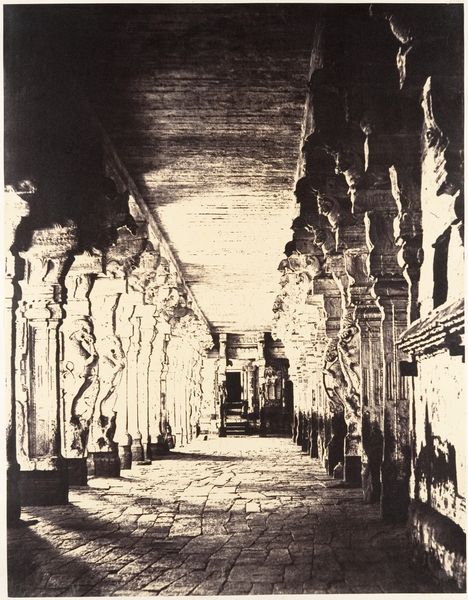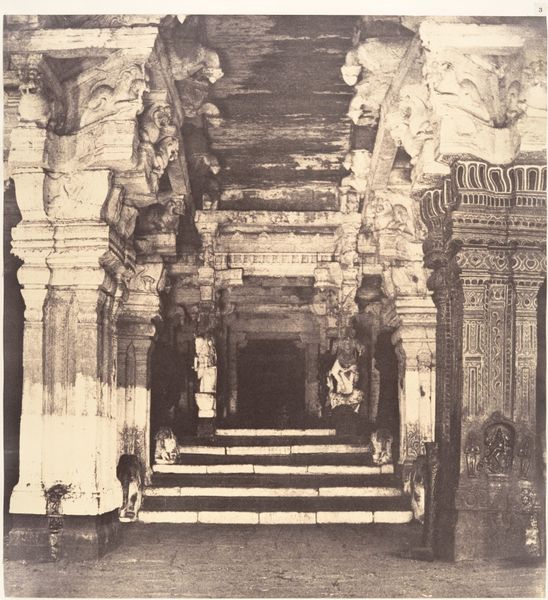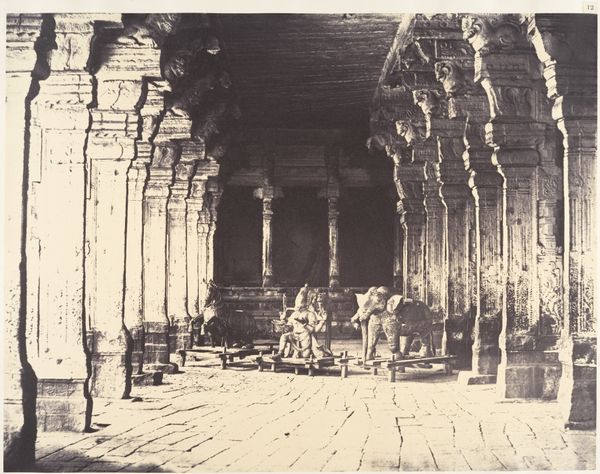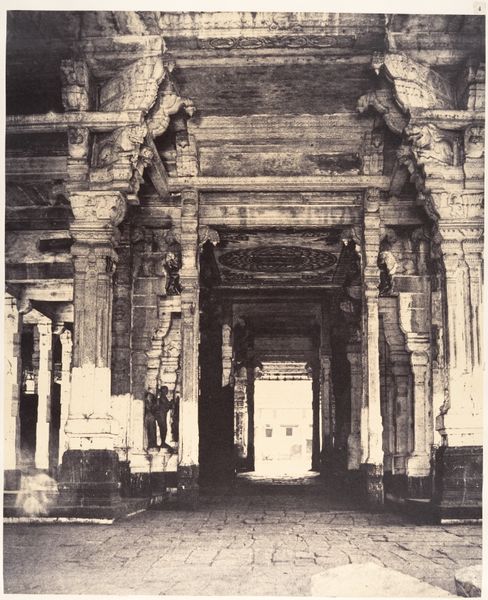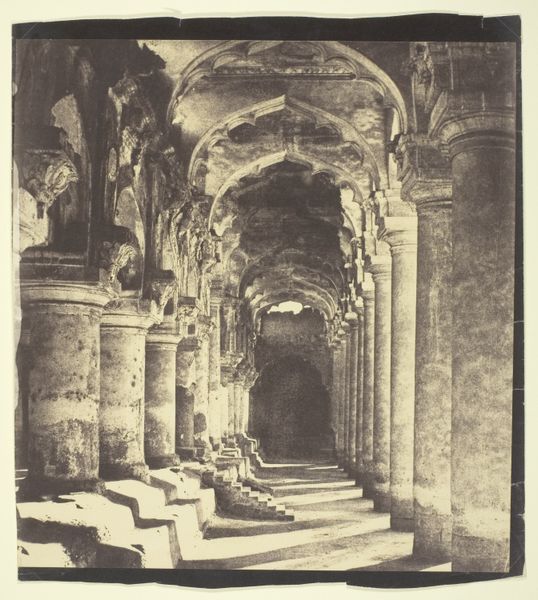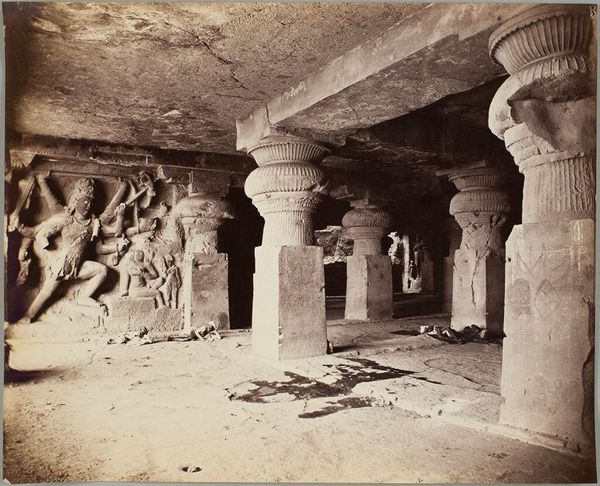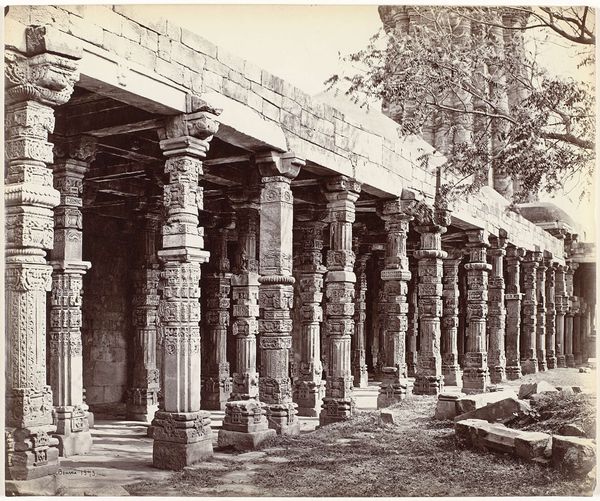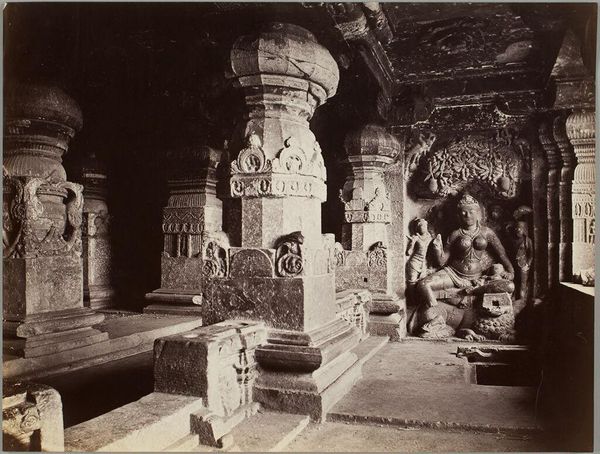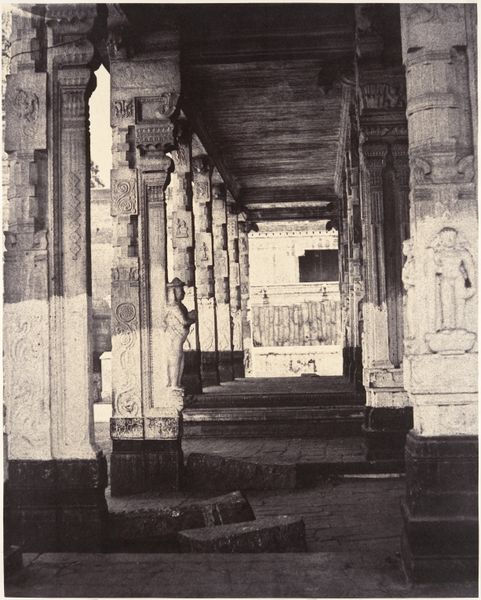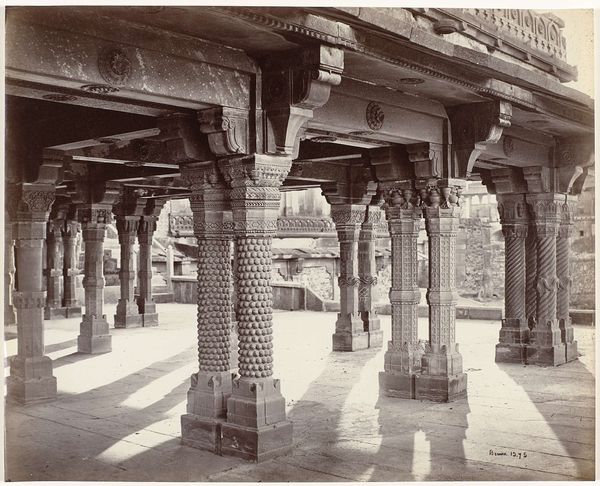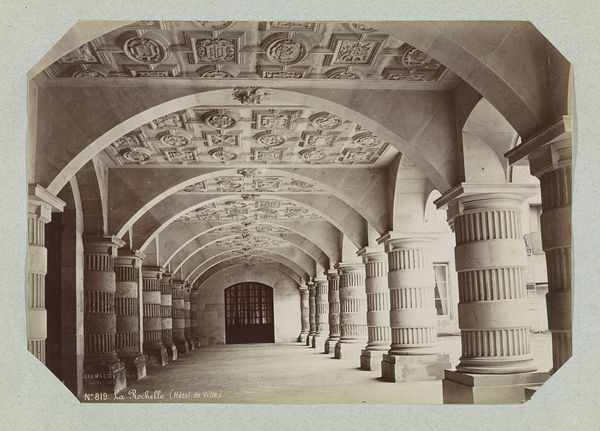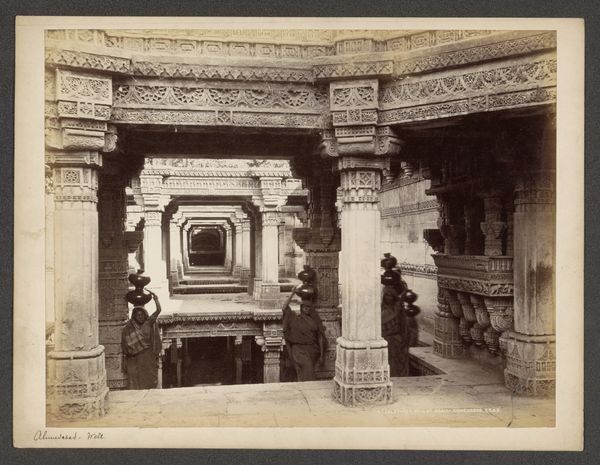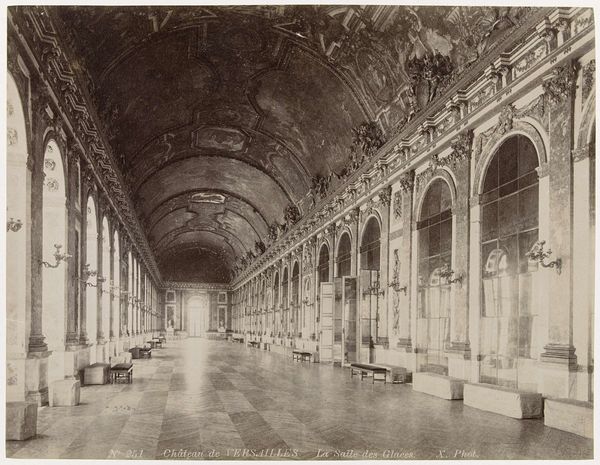
photography, architecture
#
photography
#
orientalism
#
architecture
Dimensions: Image: 29.5 x 37 cm (11 5/8 x 14 9/16 in.) Mount: 46 x 57.1 cm (18 1/8 x 22 1/2 in.)
Copyright: Public Domain
Curator: Linnaeus Tripe's 1858 photograph, "The Viravasuntarayan Munapam," currently held at the Metropolitan Museum of Art, captures a remarkable interior space through the relatively new medium of photography. Editor: The sepia tones give it such an aged, almost dreamlike quality. The receding lines of pillars draw you in, but there's also a stillness, an emptiness, that’s slightly unsettling. Curator: The use of light is definitely deliberate. Note how it models the architectural forms of the columns, illuminating the carved details, while other portions fade into darkness. Editor: That interplay of light and shadow amplifies the repetitive, almost relentless structure. Thinking about the colonial context, this image seems to participate in a power dynamic— reducing this monumental building to an object of study, a captured space. How were images such as these consumed back in England at the time? Curator: Absolutely, orientalism cannot be discounted in this work. The very act of documentation served to classify and claim cultural territories, imposing a Western lens. However, considering composition and form, note the symmetrical structure of Tripe's architecture and its relation to light. Editor: That symmetry emphasizes order and control, a perspective far removed from the spiritual purpose that infuses the Munapam. What of those beliefs? What about the communities that venerated the space? They are all but erased by the image. Curator: Still, we can read in the meticulous articulation of the temple’s materiality – its textures and sculptural elements. By cataloging form, perhaps Tripe intended an homage, albeit through a detached gaze? Editor: An homage steeped in unequal power dynamics and visual othering, perhaps? In looking closely we can certainly observe the architectural marvel but it’s also vital to question what ideological functions were served at the time, and persist even today. Curator: An insightful question that makes me consider both its enduring aesthetic impact and its complex, even contradictory, historical positioning. Editor: And it serves to highlight the complexities inherent in seeing an object stripped from its historical place. I certainly will hold this new view close in mind.
Comments
No comments
Be the first to comment and join the conversation on the ultimate creative platform.

